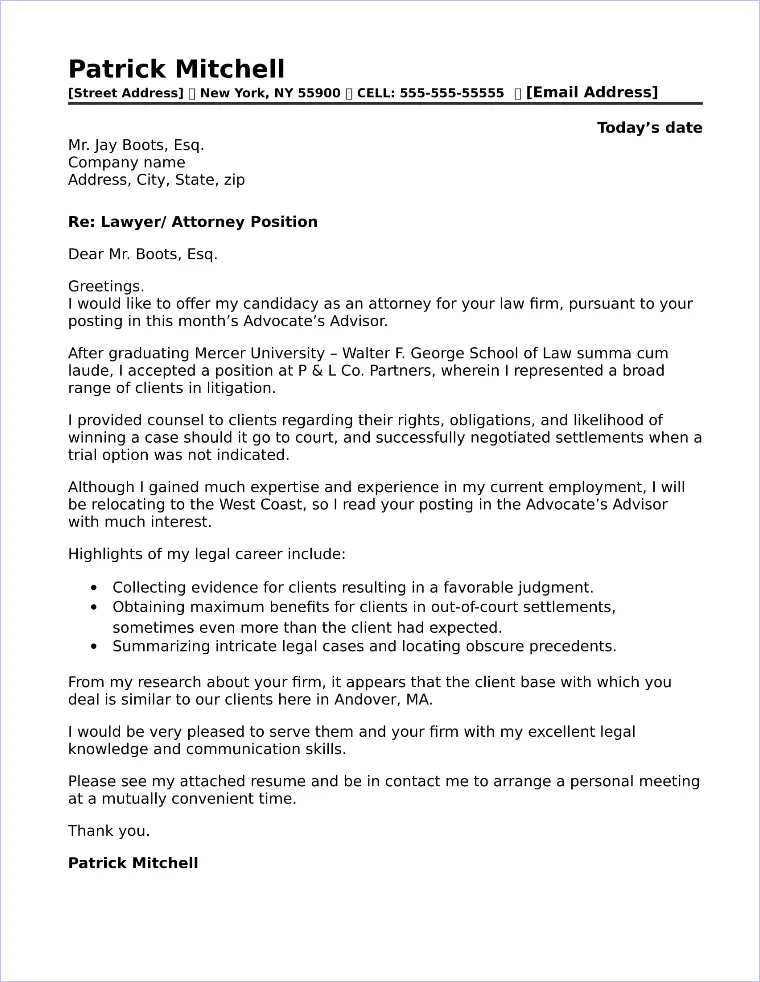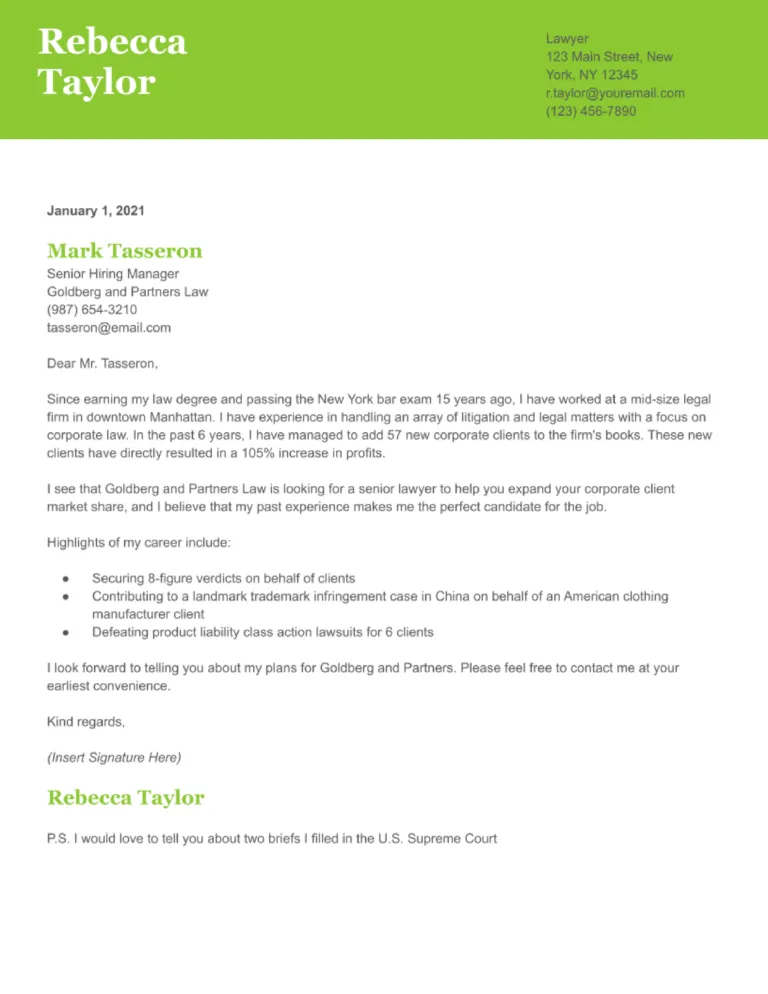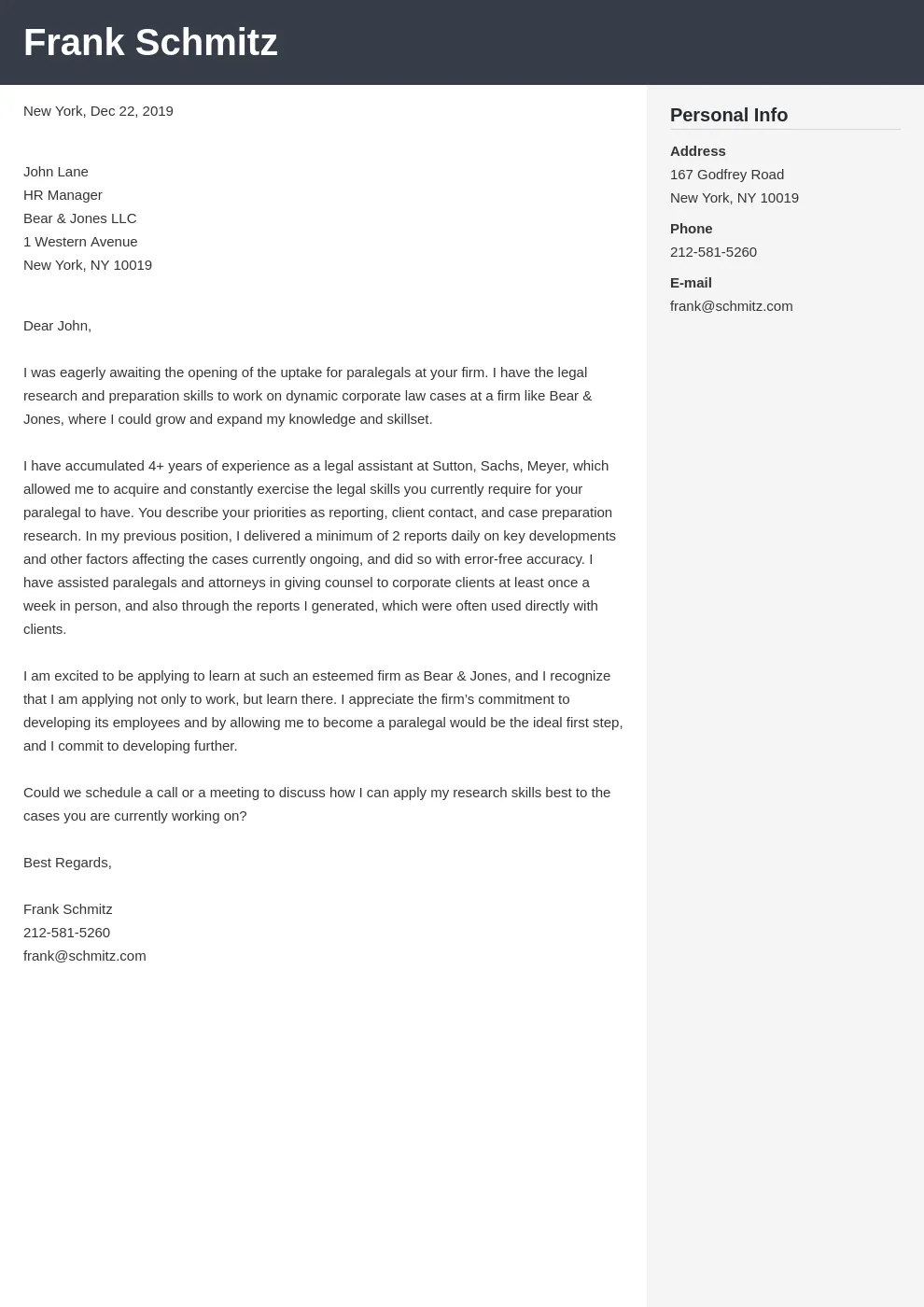Crafting Your Law Firm Cover Letter
A well-crafted cover letter is your first introduction to a potential employer at a law firm, serving as a crucial tool in securing an interview. It’s your opportunity to make a strong first impression, showcasing your personality, skills, and enthusiasm for the position. Think of it as more than just a formality; it’s a chance to tell your story, highlight your relevant experience, and explain why you’re the ideal candidate. The letter should complement your resume, providing additional context and depth to your qualifications. It’s also a chance to demonstrate your communication skills, attention to detail, and understanding of professional etiquette, all of which are highly valued in the legal field. Start by carefully reviewing the job description to identify the key requirements and tailor your letter to address them directly.
Researching the Law Firm
Before you begin writing, thorough research is essential. Understand the firm’s practice areas, recent cases, and values. Visit the firm’s website, read industry news, and explore their social media presence to gain insights into their culture and priorities. Knowing this information will help you tailor your letter to specifically address the firm’s needs and demonstrate your genuine interest. Addressing the letter to a specific person, if possible, shows you’ve taken the initiative to learn about the firm and its team. This attention to detail and personalized approach can significantly increase your chances of getting noticed. Research can also help you determine if the firm is a good fit for your career goals and professional aspirations, helping you make a more informed decision.
Understanding the Law Firm’s Culture

Every law firm has its own unique culture, and understanding it can influence how you present yourself in your cover letter. Some firms may value a more formal and traditional approach, while others may appreciate a more modern and innovative style. If the firm emphasizes teamwork, highlight your collaborative skills. If they are known for their commitment to pro bono work, mention any related experience or interests. Researching the firm’s culture can help you align your cover letter with their values and make you a more appealing candidate. This includes understanding their communication style, dress code, and overall work environment. It’s about showing the firm that you understand their values and that you would be a good fit for their team and the firm’s way of operations.
Highlighting Relevant Skills and Experience
Your cover letter should clearly showcase the skills and experience most relevant to the position you are applying for. Review the job description and identify the key qualifications the firm is seeking. Provide specific examples of how your skills and experience align with those requirements. For example, if the job requires strong research skills, describe a time when you successfully researched a complex legal issue. If the position requires excellent writing skills, highlight your ability to write clear, concise, and persuasive legal documents. Use action verbs to describe your accomplishments and quantify your achievements whenever possible. Tailor your response to the specific law firm’s requirements. Be sure to show them, not just tell them, why you are the best candidate for the job.
Tailoring Your Cover Letter
Avoid using a generic cover letter. Instead, tailor your letter to each law firm and each specific position. This means customizing the content to reflect the firm’s values, the specific requirements of the role, and your understanding of their work. Mentioning something specific about the firm, such as a recent case or an attorney you admire, shows you’ve done your homework and are genuinely interested. Address the letter to a specific person, if possible, and use their name correctly. Personalization demonstrates initiative, attention to detail, and a genuine interest in the opportunity. Highlighting why you are a good fit for the law firm should be the focus of your letter. Generic letters often get filtered out early in the hiring process.
Formatting Your Cover Letter

The format of your cover letter is important. Use a professional font, such as Times New Roman, Arial, or Calibri, and maintain consistent formatting throughout the document. Keep the letter concise, ideally one page long, and use clear headings and paragraphs to make it easy to read. Ensure your contact information, including your name, phone number, email address, and LinkedIn profile URL, is prominently displayed at the top of the letter. Use a professional letter format with a formal salutation (e.g., “Dear Mr. / Ms. [Last Name]”) and a professional closing (e.g., “Sincerely”). Proofread the letter carefully for any typos, grammatical errors, or formatting inconsistencies. Correct formatting is key to success.
Using Professional Language
Use clear, concise, and professional language throughout your cover letter. Avoid slang, jargon, and overly casual language. Focus on demonstrating your skills, experience, and enthusiasm in a positive and professional manner. Use strong action verbs to describe your accomplishments and quantify your achievements whenever possible. Be confident but not arrogant. Showcase your personality while maintaining a professional tone. Always proofread your letter carefully for any grammatical errors, spelling mistakes, or punctuation errors. Ensure the language used is appropriate for a legal environment, demonstrating your understanding of professional communication. Keeping it simple and professional is the key to writing a great letter.
Showcasing Achievements and Results
Rather than simply listing your responsibilities, use your cover letter to showcase your achievements and the results you have obtained. Provide specific examples of how you have made a positive impact in previous roles. Quantify your achievements whenever possible. Instead of saying “Managed client communications”, say “Successfully managed and resolved client communications, resulting in a 15% increase in client satisfaction.” Highlighting your achievements demonstrates your value and makes you a more compelling candidate. Focus on the impact you had and how your actions benefited your previous employers or clients. Use measurable results to show your capabilities and value.
Proofreading Your Cover Letter

Proofreading is a crucial step in the cover letter writing process. Errors can create a negative impression and undermine your credibility. Before submitting your letter, carefully proofread it for any typos, grammatical errors, spelling mistakes, and punctuation errors. Read the letter aloud to catch any awkward phrasing or unclear sentences. Have a friend, family member, or career counselor review your letter for a fresh perspective. Use grammar and spell-checking tools, but don’t rely on them completely. A well-proofread cover letter shows attention to detail and a commitment to professionalism, both of which are highly valued in the legal profession. Correct any errors found before sending your letter.
Writing a Strong Closing
Your closing paragraph is your final opportunity to leave a positive impression. Reiterate your interest in the position and your enthusiasm for the opportunity. Thank the reader for their time and consideration. State your availability for an interview and how you can be reached. Avoid clichés and generic phrases. Instead, use a confident and professional tone. Be sure to provide a clear call to action, such as “I am eager to discuss my qualifications further in an interview.” A strong closing paragraph can leave a lasting impression and increase your chances of getting noticed by the hiring committee. Remember, a great cover letter can open the door to your dream job.
